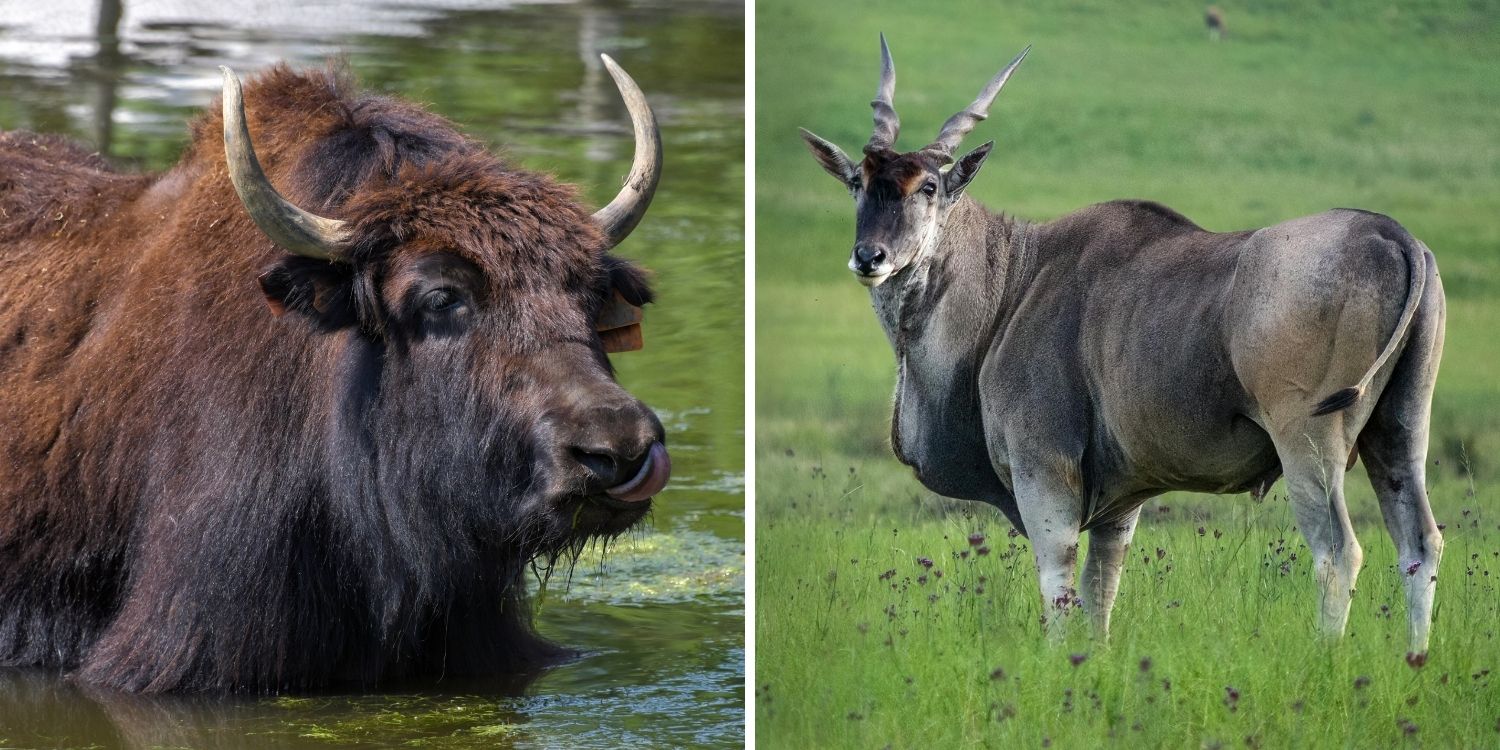
The vast grasslands and savannas of our planet teem with a diverse array of grazing mammals. Among them are two prominent groups that often cause confusion: bovines and antelopes. While both are hoofed herbivores with a taste for grasses and leaves, they belong to different subfamilies within the Artiodactyla (even-toed ungulates) order and have some distinct characteristics. Let’s delve into the world of these fascinating creatures and discover what sets them apart.
Family Matters
- Bovines: These belong to the subfamily Bovinae within the Bovidae family. Familiar members include cattle, bison, buffalo, water buffalo, muskox, and some of the larger antelope species like the spiral-horned antelope and the four-horned antelope.
- Antelopes: Antelopes, on the other hand, encompass a much broader subfamily within Bovidae – the Antilopinae. This subfamily includes a vast array of species, from the tiny royal antelope, the smallest antelope species on Earth, to the majestic giant eland, the largest antelope.
Horn Distinctions
One of the most noticeable differences lies in their horns:
- Bovines: Both males and females of some bovine species can grow horns, although the horns of females are typically smaller. Bovine horns are permanent structures made of keratin, the same material as our hair and nails, and grow continuously throughout their lifespan. These horns are triangular or round in cross-section.
- Antelopes: All antelope have horns; in some species they are only found on the males, whereas in others, such as gazelles, both males and females have them. The horns are made of a bony core encased in a hard material made largely of keratin.
Built for Different Lifestyles
Their body shapes and adaptations also reflect their ecological niches:
- Bovines: These animals tend to be stockier and more heavily built, with broad chests and powerful legs. They are often grazers of open grasslands and savannas.
- Antelopes: With their slender limbs and graceful builds, antelopes are adapted for a wider range of habitats, including grasslands, woodlands, and even mountainous regions. Their agility allows them to be swift runners and adept leapers.
A Tail Tale Sign
Even their tails offer subtle clues:
- Bovines: The tails of bovines are typically short and bushy, extending down towards their hooves.
- Antelopes: Antelope tails are generally longer and thinner, held upright or slightly curved.
A Shared Future
Despite their differences, both bovines and antelopes play crucial roles in their ecosystems. They are important grazers, helping to maintain healthy grasslands and savannas. Sadly, both groups face threats from habitat loss, poaching, and competition with livestock. Conservation efforts are essential to ensure their continued existence.
So, the next time you see a grazing herbivore on the savanna, take a closer look at its horns, body shape, and tail to see if it’s a bovine or an antelope. By understanding these fascinating creatures and their unique characteristics, we can appreciate the incredible diversity of the animal kingdom.






